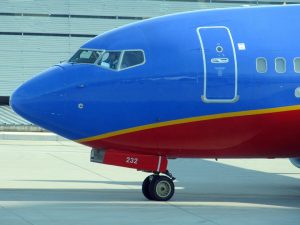 The next time you’re sitting at the airport waiting for a flight, look outside at the tarmac and you’ll probably discover two types of noses on airplanes. Some airplanes have a pointed nose, whereas others have a rounded or blunt nose. Granted, most commercial airplanes, including the Boeing 747 and the massive Airbus A380, have a rounded nose. Most military airplanes, as well as some commercial airplanes, on the other hand, have a pointed nose. So, why do some airplanes have a pointed nose and others a rounded nose?
The next time you’re sitting at the airport waiting for a flight, look outside at the tarmac and you’ll probably discover two types of noses on airplanes. Some airplanes have a pointed nose, whereas others have a rounded or blunt nose. Granted, most commercial airplanes, including the Boeing 747 and the massive Airbus A380, have a rounded nose. Most military airplanes, as well as some commercial airplanes, on the other hand, have a pointed nose. So, why do some airplanes have a pointed nose and others a rounded nose?
Subsonic vs Supersonic Speeds
To determine whether to use a pointed nose or rounded nose on an airplane, aerospace manufacturing companies consider the airplane’s speed. Subsonic airplanes — those flying slower than the speed of sound — are given a rounded nose. In comparison, supersonic airplanes — those flying faster than the speed of sound — are given a pointed nose.
Rounded-Nose Airplanes
Airplanes with a rounded nose are able to create a suction on the fuselage, thereby pulling the air around the airplane. During flight, airplanes with a rounded nose push the air in front of them, allowing it to roll over the fuselage with minimal resistance. This creates a suction that easily guides the air over the airplane’s fuselage to minimize resistance.
Pointed-Nose Airplanes
If an airplane flies faster than the speed of sound, it’s given a rounded nose. Once the air first makes contact with the airplane’s rounded nose, it creates a shock that immediately changes the air’s path. It’s impossible to completely avoid this shock when flying at hypersonic speeds. When an airplane first breaks through Mach 1, it will create a shock at the nose. The reason hypersonic-speed airplanes are given a pointed nose is because it minimizes the strength of the shock.
If hypersonic-speed airplanes used a rounded nose, they would create a stronger shock after exceeding the speed of sound. In turn, they would encounter greater resistance. To minimize resistance associated with this shock, hypersonic-speed airplanes are given a pointed nose. The pointed nose allows for a weaker shock so that it doesn’t cause an excessive amount of resistance.
Airplanes generally have either a rounded nose or pointed nose. As revealed in this blog post, airplanes are given a rounded nose if they fly slower than the speed of sound. Airplanes are given a pointed nose, on the other hand, if they fly faster than the speed of sound.



